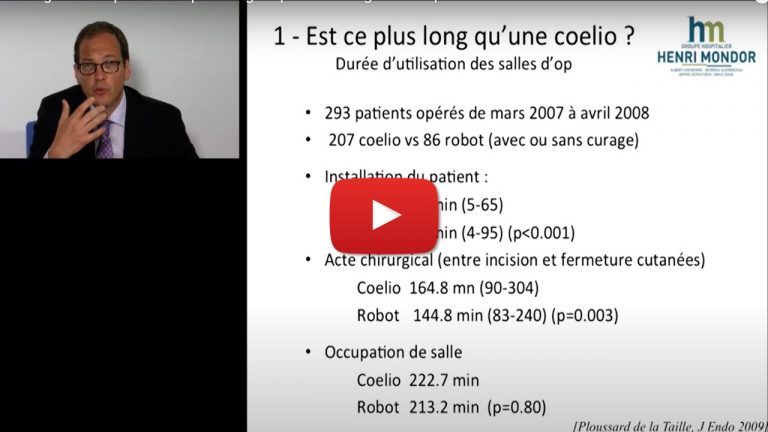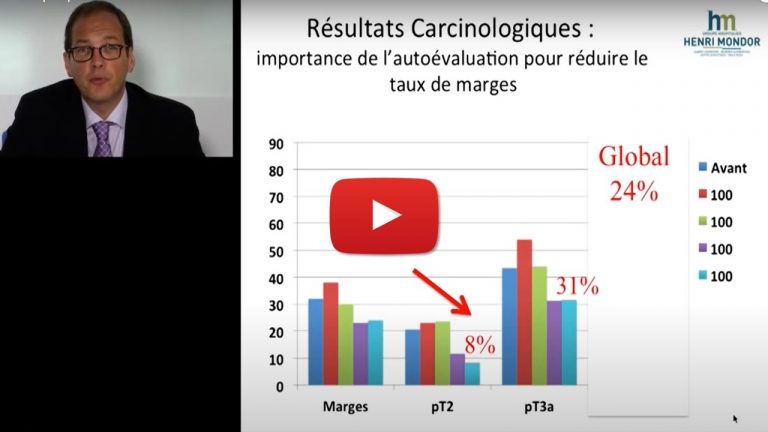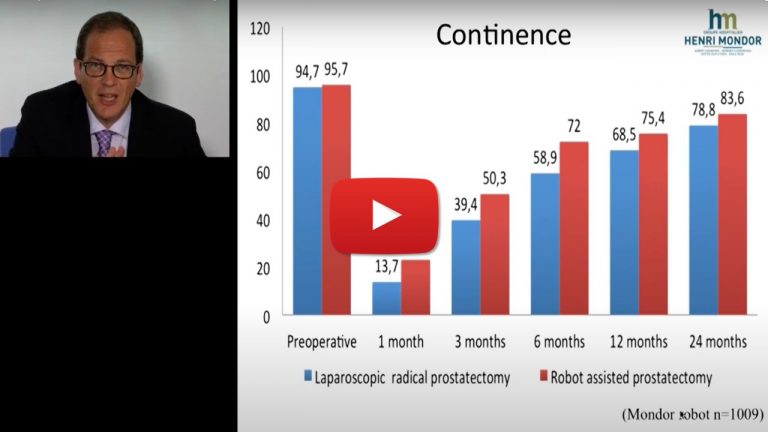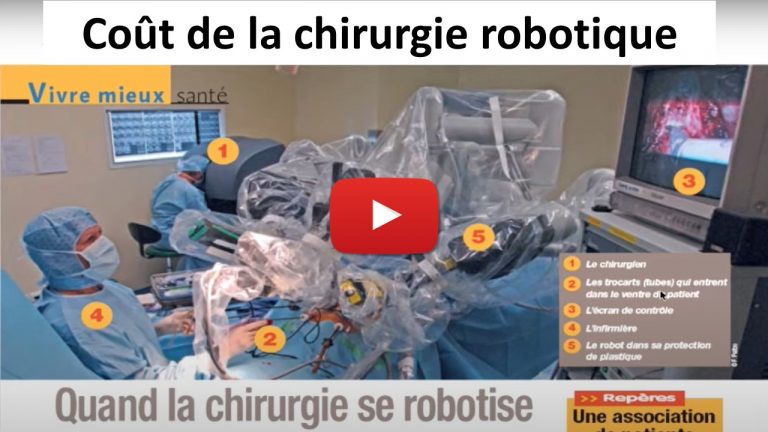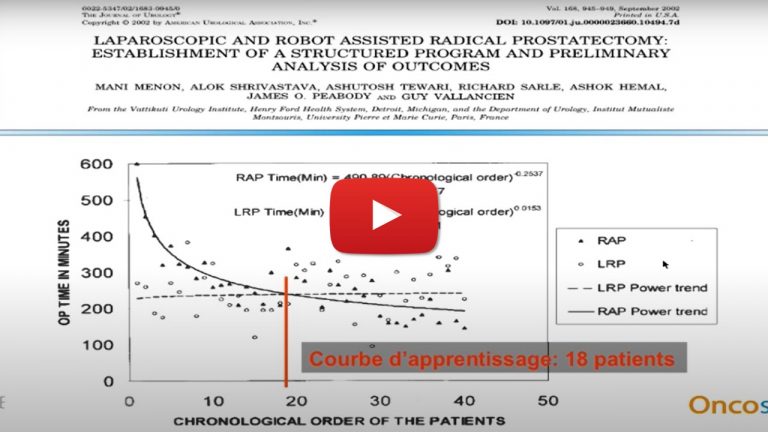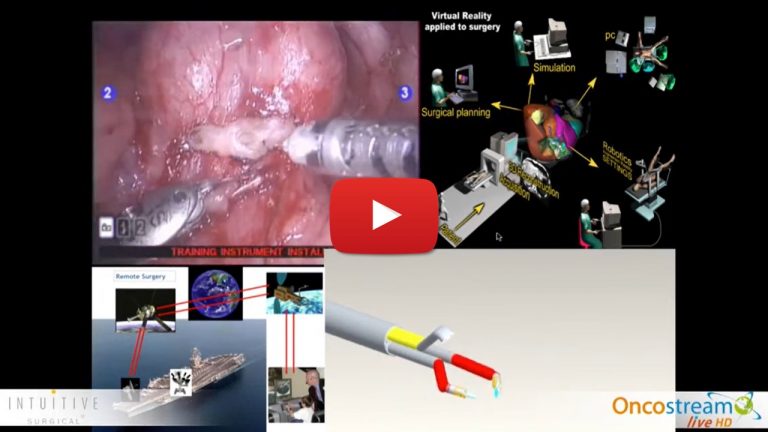Robotic assisted radical prostatectomy course
The course on robot-assisted radical prostatectomy explains the evolution of surgery in the treatment of prostate cancer since the year 2000. The first robot-assisted radical prostatectomy in France was performed in our hospital, the CHU Henri Mondor. Robotics allows cancer control equivalent to other surgical approaches such as open surgery or laparoscopic surgery. The precision of the gestures improves the recovery of continence and erections. The cost of robotic surgery is also discussed, as well as the means of training to learn this technique. A series of educational films explains in detail the technique of bladder neck dissection and reconstruction. Finally, the future of robotic surgery is discussed, with innovations such as the use of laser dissections connected to a robotic arm and the development of the "one port" approach.
Introduction to the course on robotics in prostate cancer treatment
Surgery is evolving. The course you are about to follow traces the surgical evolution of prostate cancer treatment since the year 2000, when the first robot-assisted radical prostatectomy in France was performed in our department. The remote manipulator robot allows to improve the surgeon's gesture.
Which dissection technique?
This film explains in a detailed and pedagogical way, how to dissect the prostate even in difficult cases such as after radiotherapy. The particular case of the median lobe is also explained, as well as the technique of making a racket tail to reconstruct the bladder neck. The essential role of the fourth robotic arm is emphasized, as well as the importance of a well-trained team of professionals. Finally, the article presents practical advice to ensure effective hemostasis and optimize the ergonomics of the operation.
What is the future of robotic surgery?
Various innovations in robotic surgery, including the use of laser dissections connected to a robotic arm and the development of the "one port" approach using the latest version of the da Vinci robot are discussed. The film also discusses the potential of telesurgery and the challenges of implementing robotic surgery, including the need for extensive team training and the high cost of the technology. Colleagues interested in da Vinci surgery are encouraged to try the surgical robot at training centers.


